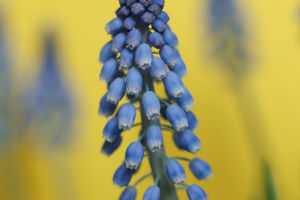Setaria Viridis
Sowing Setaria viridis, commonly known as green foxtail, requires careful attention to detail to ensure successful germination and growth.
This annual grass is used in various agricultural and ecological applications, including as a cover crop, forage, and in research studies.
Understanding the specific requirements and potential challenges of sowing Setaria viridis can significantly impact the outcome of your planting efforts.
This essay outlines the key factors to consider when sowing Setaria viridis, including soil preparation, sowing techniques, climate considerations, and post-sowing care.
Soil Preparation
The first critical step in sowing Setaria viridis is proper soil preparation. This grass thrives in well-drained soils with good fertility. Before sowing, ensure that the soil is adequately prepared to provide an optimal environment for seed germination and seedling growth.
Soil Type: Setaria viridis prefers loamy or sandy loam soils that offer good drainage. Heavy clay soils should be avoided or improved with organic matter to enhance drainage and aeration.
Soil pH: The ideal soil pH for Setaria viridis is between 5.5 and 7.0. Conduct a soil test before planting to determine the pH level and make necessary adjustments. Lime can be added to raise the pH, while sulfur can help lower it if needed.
Soil Preparation: Prior to sowing, prepare the soil by tilling or plowing to a depth of at least 6 inches. This will help break up compacted layers and improve seed-to-soil contact. Incorporate organic matter, such as compost or well-rotted manure, to enhance soil fertility and structure.
Sowing Techniques
Once the soil is prepared, the next step is to sow the seeds. Proper sowing techniques can significantly impact seed germination rates and overall plant health.
Timing: Setaria viridis is typically sown in the spring or early summer when soil temperatures are consistently above 60°F (15°C). This is crucial for ensuring that seeds germinate effectively and seedlings establish well.
Seeding Rate: The recommended seeding rate for Setaria viridis varies depending on the intended use and planting method. For cover crops or forage, sowing at a rate of 8 to 12 pounds per acre is generally effective.
For research purposes, a lower seeding rate may be used to study specific growth characteristics.
Seeding Depth: Sow the seeds at a depth of approximately 0.5 to 1 inch. Planting too deep can hinder germination, while sowing too shallow may expose seeds to unfavorable conditions.
Ensure that the seeds are adequately covered with soil and gently tamped down to promote good seed-to-soil contact.
Method: Seeds can be sown using various methods, including broadcast sowing, drilling, or using a seed planter.
Each method has its advantages and should be chosen based on the size of the planting area and available equipment.
Climate Considerations
Climate plays a crucial role in the successful growth of Setaria viridis. Understanding and adapting to local climatic conditions can help ensure a healthy crop.
Temperature: Setaria viridis prefers warm temperatures and grows best in areas with temperatures ranging from 70°F to 85°F (21°C to 29°C). Frost can damage young seedlings, so avoid sowing too early in regions prone to late frosts.
Watering: Adequate moisture is essential for seed germination and seedling establishment. Ensure that the soil remains consistently moist but not waterlogged.
Overwatering can lead to root rot, while insufficient moisture can result in poor germination.
Sunlight: Setaria viridis requires full sun to thrive. Ensure that the planting site receives at least 6 to 8 hours of direct sunlight per day. Shade can hinder growth and reduce yields.


